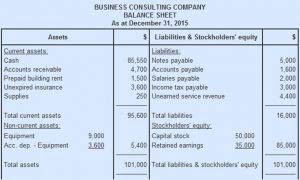
Another way sellers apply the allowance method of recording bad debts expense is by using the percentage of credit sales approach. This approach income statement accounts automatically expenses a percentage of its credit sales based on past history. The Bad Debts Expense remains at $10,000; it is not directly affected by the journal entry write-off. The bad debts expense recorded on June 30 and July 31 had anticipated a credit loss such as this. It would be double counting for Gem to record both an anticipated estimate of a credit loss and the actual credit loss.

What are the Benefits of Factoring Your Account Receivable?

They provide a clear and accurate record of all transactions related balance sheet to accounts receivable, ensuring the integrity of a business’s financial statements. Distinguishing between accounts receivable and accounts payable process is key in providing properly kept financial records and effective cash flow management. These two types of accounts are disparate ends of a business’s financial operations, and mixing them could cause serious cash flow challenges. By differentiating between the two, companies can better monitor outstanding invoices, trail payments to suppliers, and evaluate overall financial health. Unlike accounts receivable, which involves the customers, accounts payable presents a business’s responsibility to pay for goods or services acquired on credit. These current liabilities present short-term debts that must be paid to facilitate positive cash flow.
Allowance for Doubtful Accounts and Bad Debts Expense – June
When a business sells goods or services on account, it creates an accounts receivable. This transaction is recorded with a debit to Accounts Receivable and a credit to Sales Revenue. This quick guide will provide a comprehensive overview of accounts receivable journal entries, including their purpose, types, and step-by-step instructions on how to record them accurately. On June 3, a customer purchases $1,400 of goods on credit from Gem Merchandise Co. On August 24, that same customer informs Gem Merchandise Co. that it has filed for bankruptcy.
- When it comes to financial reporting, understanding the intricacies of accounting can be overwhelming, especially for small business owners or new finance professionals.
- Each day the total of the day’s credit sales and the day’s collections are posted to this account.
- Therefore, the supplier sent the customer, i.e. the manufacturer, an invoice for the amount owed, which we’ll assume to be $50k.
- Sometimes, businesses offer such credit to frequent or special customers, who receive periodic invoices rather than having to make payments as each transaction occurs.
- On the other hand, if a company’s A/R balance declines, the invoices billed to customers that paid on credit were completed and the money was received in cash.
Develop a crystal-clear credit policy

Further, the status of payables balances informs the payable department of when and how to ensure timely payments and maintain favorable supplier relationships. In the context of accounts receivable it is the amount of accounts receivable that is expected to be collected. This should be the debit balance in Accounts Receivable minus the credit balance in Allowance for Doubtful Accounts. A record in the general ledger that is used to collect and store similar information. For example, a company will have a Cash account in which every transaction involving cash is recorded.

Sale on account
All balance sheet accounts checked with “Eliminate Intercompany Transaction” are used exclusively for intercompany posting. The impacted balance sheet accounts include A/R, A/P, Other Current Asset (excluding inventory account), Other Current Liability, Long Term Liability, Other Asset, Deferred Expense, and Deferred Revenue. The type of journal entry will determine whether it is a debit or credit entry. This type of journal entry records the receipt of cash from customers for goods or services previously sold on account.
- If a company’s accounts receivable balance increases, more revenue must have been earned with payment in the form of credit, so more cash payments must be collected in the future.
- However, a review of your assets may indicate that even though your debts have increased, so have your assets and net assets.
- For example, interest earned by a manufacturer on its investments is a nonoperating revenue.
- Money that customers owe a company flows through the statement of financial position, also referred to as a balance sheet or report on financial condition.
- The difference between assets and liabilities, such as stockholders’ equity, owner’s equity, or a nonprofit organization’s net assets.
- These actions should be done cautiously and in accordance with GAAP, with proper documentation and authorization.
- Accounts Receivable (A/R) is defined as payments owed to a company by its customers for products and/or services already delivered to them – i.e. an “IOU” from customers who paid on credit.
- Note, the ending accounts receivable balance can be used, rather than the average balance, assuming the historical trend is consistent with minimal fluctuations.
- However, the details involving specific customers’ accounts will be found in a subsidiary ledger.
- You’ll read about accounts receivable turnover, the aging schedule, and how to increase cash flow.
- To record this transaction, you’d first debit “accounts receivable—Keith’s Furniture Inc.” by $500 again to get the receivable back on your books, and then credit revenue by $500.
- If the costs of collecting the debt start approaching the total value of the debt itself, it might be time to start thinking about writing the debt off as bad debt—that is, debt that is no longer of value to you.
It also states that the liquidation value of those assets is less than the amount it owes the bank, and as a result Gem will receive nothing toward its $1,400 accounts receivable. After confirming this information, Gem concludes that it should remove, or write off, law firm chart of accounts the customer’s account balance of $1,400. Since the net realizable value of a company’s accounts receivable cannot be more than the debit balance in Accounts Receivable, the balance in the Allowance for Doubtful Accounts must be a credit balance or a zero balance. With respect to financial statements, the seller should report its estimated credit losses as soon as possible using the allowance method. For income tax purposes, however, losses are reported at a later date through the use of the direct write-off method. To illustrate, suppose a retail store purchases furniture from a manufacturer for $5,000.
